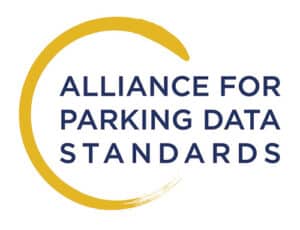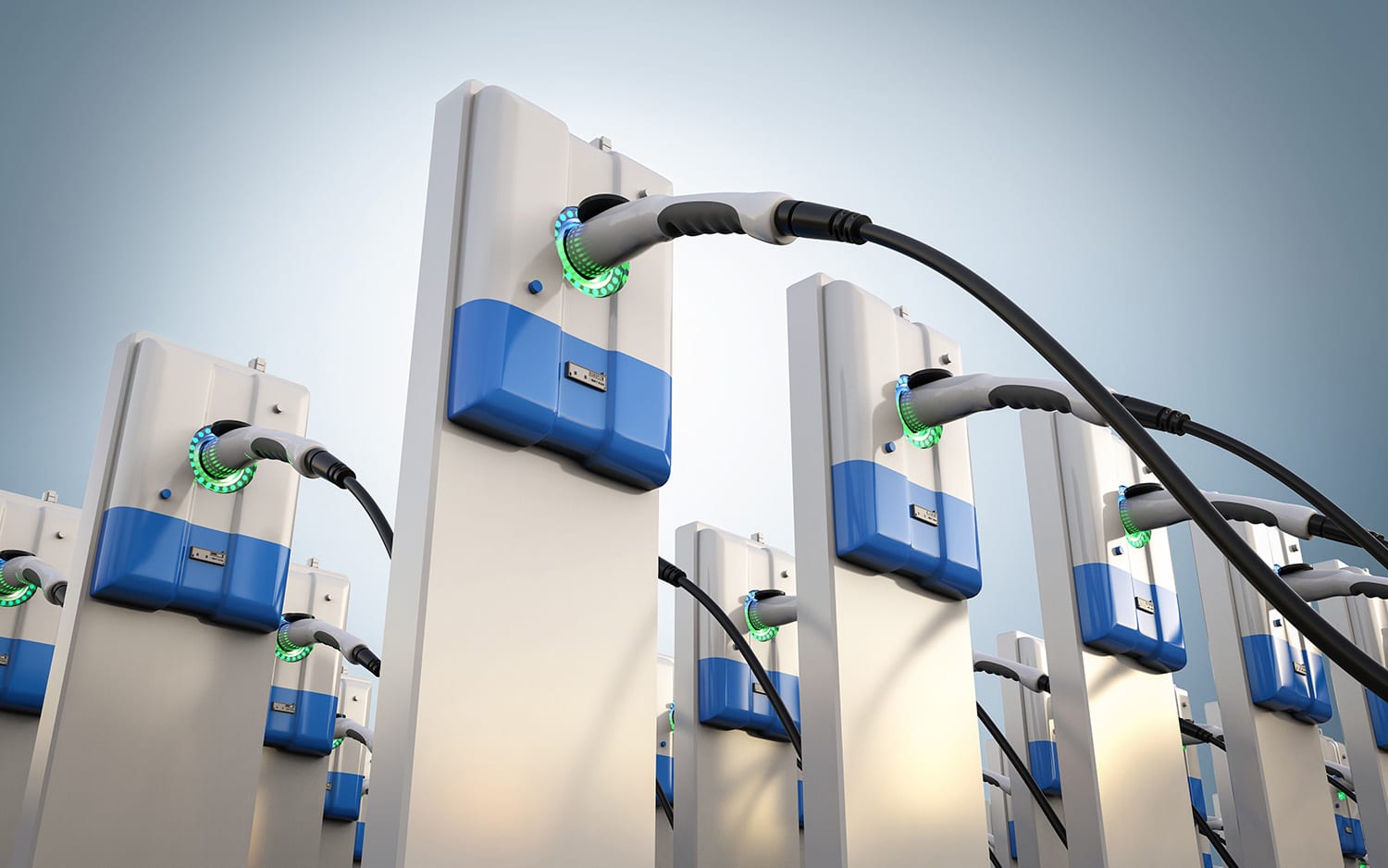
Seven-Generation Decision-Making
A major factor of sustainability is thinking about how we
Share:
Share:
The world is changing fast. Everywhere we turn, the global digital transformation occurring around us, in every industry, is making our lives easier through connected experiences. This is happening by friction being removed from a system of disparate technology platforms. Different companies are connecting behind the scenes. Today, you can walk into a store, place items in a basket and walk out without stopping to pay or without interacting with a human or a scanner. It’s also possible to rent a car without ever stopping at a counter to sign anything or to be goaded into purchasing insurance or gasoline that you don’t need.
Consider this: the internet and the first internet browser were launched less than a generation ago, and since that time, the technology to support and exploit global internet connectivity has gone from birth to bulletproof in 29 short years. With these changes, the world is transforming digitally to take advantage of new and better ways to find, procure and receive goods and services. Parking is undergoing its own digital transformation and considering the industry in more than 100 years old, it has taken advantage of many of these technological changes.
Every day, the parking and mobility industry takes ever larger strides towards their own version of a frictionless experience. Parking companies and the myriad vendors supporting parking are finding new and innovative ways to make the experience more convenient and seamless. Much progress has been made, but there’s much work to be done to close the gap. The key to narrowing the divide will take equal parts technological evolution and human effort through partnerships and collaboration. Jeff Johnson, Chief Customer Officer at FLASH, put it best during a 2022 IPMI Conference panel discussion. He introduced the concept of two different types of Application Programming Interfaces (APIs): a technology API and a human API. Both will be critical to the success our customers are rapidly expecting to experience.
To appreciate how far the industry has come, one must go back to when parking was born and appreciate all the progress that has been made. At the outset, everyone paid for parking the same way, with cold hard cash. Three generations later, there are still many places where cash is accepted, but some operators, like Peak Parking’s Will Spielhagen in Austin, Texas have taken the bold step in some facilities to remove cash and expect all customers to pay by card or mobile app. With each innovation, there’s been a focus on rooting out “silent partners” in the business (aka attendants who stole cash, as dubbed by Parker Technology’s SVP of Business Development Scott Gould), to removing cashiers in the lane altogether and replacing them with credit card payments and automated parking equipment. Given the demographics, and the experience that this next generation expects, removing cash is perfectly acceptable. But in the early days, operators weren’t even thinking about customer experience or marketing. They were busy counting cars and money by hand.
Longtime parking veteran Brett Harwood shared the perspective that the parking operator’s focus early on was on one thing and one thing only: “Focus was not on customer acquisition or customer experience—it was about controlling the cash. The marketing was a sign in front of the location.” Success in those days was driven by three things: location, location, location. In fact, Harwood told a story about the most successful campaign they ever launched—a billboard to point the parking customer to his location. Today, we can buy a ticket to a sporting event or concert and in the same window, reserve and pay for the parking that goes with it. That didn’t happen by magic; it took businesspeople seeing the need and building relationships and technology integrations to make that happen—human and technology APIs.
As these types of conveniences get more pervasive, customers’ expectations will rise and walls to this kind of success will need to be taken down. One contributing obstacle to realization of the ultimate seamless parking experience are the many systems a customer or transaction must traverse to complete the parking journey. Often these systems do not communicate with each other and because they don’t, the user is forced to bridge the gap between them. Many in the parking industry believe bridging the gap behind the scenes is the urgent critical path forward. Roamy Valera, CAPP, President of Automotus, puts it this way, “If we really want to reduce the friction consumers experience in their journey, we must agree that integration and connectivity must be a priority.”
Increasingly, companies are modernizing their technology platforms to enable the type of API connectivity and collaborative model Valera references. However, modernization and the will to collaborate, while good steps forward, will require an evolved way of exchanging information. That evolved thinking will need to be based on common ground and common vocabulary to get it done. In other words, the industry must become standards based. Mike Drow, President of PRRS served on the IPMI Technology Committee as one of the industry leaders spearheading efforts to create a standard. The way he explained it, the standards are like encouraging everyone to speak English.
The analogy is a powerful one because it underscores the critical need to communicate with words that have common meanings. But it’s more complicated and goes deeper than using the same language. That same language still has regional nuance, so only a translation layer can ensure different words with the same meaning are related to one another. For example, in one region a parking garage is a parcade or facility or ramp or carpark. The industry took a giant leap forward in 2022. Drow and other parking leaders’ efforts culminated last March with the Alliance for Parking Data Standards (APDS) announcing the International Standards Organization (ISO) adoption of a global parking data specification based on APDS specifications for vehicle and mobility data.
“The official adoption of the APDS specifications under the aegis of ISO offers tremendous benefits to the parking, mobility, and logistics sectors. APDS will drive change in those sectors by providing a universal language to facilitate sharing essential data across a multitude of technologies and platforms. ”
—Nigel Williams, Chair of APDS

To be sure, adoption of the standard was critical. Yet, Drow equates the standard as being one of several critical elements necessary to build a road. The APDS standard could be thought of as the bedrock layer before concrete is poured. The next layers required for success will be elements like common definitions, common format, privacy, and contractual frameworks. For example, a license plate stored in a database is not necessarily sensitive information in isolation, but with a name and a location that information becomes extremely private information that will require a company with these types of information to protect it. Taking the example a step further if the license plate, name, and location are being exchanged between platforms, there must be a handshake between with permissions about how the information can and will be shared to insure the chain of custody and obligation to keep this private information safe and assure it’s being used for noble reasons.
Despite this significant milestone, adoption and utilization of the APDS standard is still uneven to say the least. As the standard leaves the “ether” of possibility and lands in the real world, Drow asserts one more important industry mind shift will need to take place. All industry participants will need to embrace the notion that this magic standard data will not reside in a single system. It will reside everywhere, and the standard will ensure any system needing to access the most accurate version of it will be able to traverse a standards-driven “road” to the correct record where it originated. For the skeptics, one can see this coming together as designed in Europe, where several UK municipalities have paved the way for universal information sharing and universal payment through collaboration and standards. Of course, Europe is not the United States, but those closest to the advances being made are hopeful that the success in Europe can be “boxed up and shipped” to the U.S. as a base example for what’s possible.
When that box arrives, a growing number of companies and operators here in the U.S. are eager, willing and able to embrace the change. One of those leaders is Don Charley, the Assistant Vice President of Transportation and Parking for the University of Pittsburgh Medical Center (UPMC). He is a champion for the hard work that must be done to make parking a better experience. Charley put it this way “Think about it, people rarely go somewhere to simply park. They typically have an itinerary like meeting a friend for coffee, traveling to the airport or going shopping, and often see the task of finding and paying for parking as an annoyance. Parking should be a seamless part of those plans, and not a hassle or inconvenience. In the case of an open parking ecosystem, the more providers and options that parkers can choose from, the more likely mobile transactions will occur, thus increasing revenue. So, if you can give people the option to park using the navigation app that directed them to their parking space, the lifestyle app they ordered food through or just their preferred everyday app, this creates and sustains the seamless parking experience for them.”
The success in the U.S. in emulating Europe needs to look no further than the interstates upon which we rely so heavily today. Inspired by the network of high-speed roads he saw in Germany during World War II, Dwight D. Eisenhower championed the passing of the Federal-Aid Highway Act of 1956. The law funded the first 41,000 miles of paved glory that made up the early U.S. interstate system, which now boasts 46,876 miles and runs through all 50 states. Today, we take our highways for granted, not realizing the massive planning and backbreaking work it took to create them. However, with each completed mile of highway during the 17-year long project, tremendous commerce and freedom grew.
Just like this massive and impressive network of roads, parking is on the path to making this kind of ease and convenience a reality with each connection and collaboration created through human and technology APIs, unleashing a massive wave of opportunity for those entities that sign-up and participate in an open ecosystem of parking availability and commerce. Valera put it best as he signaled a tone of warning for those who insist on operating under ‘business as usual,’ when he said “Clients (cities/operators) cannot continue to operate in multiple silos because of the fear vendors have of adopting a collaborative model with other technologies.” The brave new world of a seamless parking experience demands leaders commit to building collaborations. Embracing human APIs and platform integrations via technology APIs, will make the parking experience as easy as ordering a cup of coffee on your phone, paying for it, and having it waiting for you when you arrive. ◆
Brian Wolff, is President & CEO of Parker Technology and a member of the IPMI Technology Committee.

A major factor of sustainability is thinking about how we

EV Readiness Perspectives

Aside from electric and automated vehicle use, what “green” practices
Parking & Mobility is IPMI’s flagship publication, covering the news, trends, analysis, technologies, and people of the parking and mobility industry, and how it affects and influences communities around the world.
| Cookie | Duration | Description |
|---|---|---|
| cookielawinfo-checkbox-advertisement | 1 year | Set by the GDPR Cookie Consent plugin, this cookie is used to record the user consent for the cookies in the "Advertisement" category . |
| cookielawinfo-checkbox-analytics | 11 months | This cookie is set by GDPR Cookie Consent plugin. The cookie is used to store the user consent for the cookies in the category "Analytics". |
| cookielawinfo-checkbox-functional | 11 months | The cookie is set by GDPR cookie consent to record the user consent for the cookies in the category "Functional". |
| cookielawinfo-checkbox-necessary | 11 months | This cookie is set by GDPR Cookie Consent plugin. The cookies is used to store the user consent for the cookies in the category "Necessary". |
| cookielawinfo-checkbox-others | 11 months | This cookie is set by GDPR Cookie Consent plugin. The cookie is used to store the user consent for the cookies in the category "Other. |
| cookielawinfo-checkbox-performance | 11 months | This cookie is set by GDPR Cookie Consent plugin. The cookie is used to store the user consent for the cookies in the category "Performance". |
| CookieLawInfoConsent | 1 year | Records the default button state of the corresponding category & the status of CCPA. It works only in coordination with the primary cookie. |
| elementor | never | This cookie is used by the website's WordPress theme. It allows the website owner to implement or change the website's content in real-time. |
| viewed_cookie_policy | 11 months | The cookie is set by the GDPR Cookie Consent plugin and is used to store whether or not user has consented to the use of cookies. It does not store any personal data. |
| Cookie | Duration | Description |
|---|---|---|
| _ga | 2 years | The _ga cookie, installed by Google Analytics, calculates visitor, session and campaign data and also keeps track of site usage for the site's analytics report. The cookie stores information anonymously and assigns a randomly generated number to recognize unique visitors. |
| _ga_02PMHW8YWC | 2 years | This cookie is installed by Google Analytics. |
| _ga_LC0QJJHM3J | 2 years | This cookie is installed by Google Analytics. |
| _ga_V9KYTSBYT2 | 2 years | This cookie is installed by Google Analytics. |
| iutk | 5 months 27 days | This cookie is used by Issuu analytic system to gather information regarding visitor activity on Issuu products. |
| Cookie | Duration | Description |
|---|---|---|
| mc | 1 year 1 month | Quantserve sets the mc cookie to anonymously track user behaviour on the website. |
| Cookie | Duration | Description |
|---|---|---|
| ultp_view_1052 | 1 day | No description |
| ultp_view_1058 | 1 day | No description |
| ultp_view_1060 | 1 day | No description |
| ultp_view_1064 | 1 day | No description |
| ultp_view_1068 | 1 day | No description |
| ultp_view_1070 | 1 day | No description |
| ultp_view_1072 | 1 day | No description |
| ultp_view_1078 | 1 day | No description |
| ultp_view_1082 | 1 day | No description |
| ultp_view_1088 | 1 day | No description |
| ultp_view_1100 | 1 day | No description |
| ultp_view_1103 | 1 day | No description |
| ultp_view_1114 | 1 day | No description |
| ultp_view_1118 | 1 day | No description |
| ultp_view_1122 | 1 day | No description |
| ultp_view_1125 | 1 day | No description |
| ultp_view_1130 | 1 day | No description |
| ultp_view_1132 | 1 day | No description |
| ultp_view_1135 | 1 day | No description |
| ultp_view_1541 | 1 day | No description |
| ultp_view_1554 | 1 day | No description |
| ultp_view_1557 | 1 day | No description |
| ultp_view_1560 | 1 day | No description |
| ultp_view_1563 | 1 day | No description |
| ultp_view_1568 | 1 day | No description |
| ultp_view_1572 | 1 day | No description |
| ultp_view_1576 | 1 day | No description |
| ultp_view_1580 | 1 day | No description |
| ultp_view_2305 | 1 day | No description |
| ultp_view_2321 | 1 day | No description |
| ultp_view_2338 | 1 day | No description |
| ultp_view_2342 | 1 day | No description |
| ultp_view_259 | 1 day | No description |
| ultp_view_270 | 1 day | No description |
| ultp_view_275 | 1 day | No description |
| ultp_view_286 | 1 day | No description |
| ultp_view_3074 | 1 day | No description |
| ultp_view_3115 | 1 day | No description |
| ultp_view_3334 | 1 day | No description |
| ultp_view_3336 | 1 day | No description |
| ultp_view_3338 | 1 day | No description |
| ultp_view_3340 | 1 day | No description |
| ultp_view_3346 | 1 day | No description |
| ultp_view_3354 | 1 day | No description |
| ultp_view_3361 | 1 day | No description |
| ultp_view_3367 | 1 day | No description |
| ultp_view_365 | 1 day | No description |
| ultp_view_367 | 1 day | No description |
| ultp_view_38 | 1 day | No description |
| ultp_view_3846 | 1 day | No description |